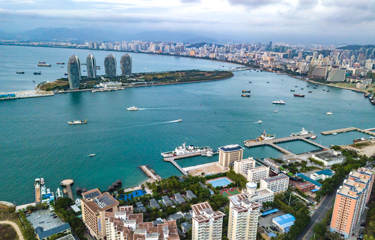China’s listed seafood firms enjoyed a stock market bounce last week thanks to the announcement of a government plan to invest in fishing ports nationwide.
All of China’s seafood firms saw a bump in share value, with CNFC Overseas Fishery Co. enjoying a 10 percent surge, while leading firm Zoneco saw its share price jump by 6.5 percent as investors looked at the document as proof of a new boost for the fisheries sector. This comes the same week as Zoneco announced it’s selling off some of its processing and distribution entities as it seeks to ratchet down very high debt. Zoneco will sell Dalian Xinzhong Seafood Food Co., and 90 percent of its equity in Tokyo, Japan-based New China Japan Co., to Asia Fishing Port Holdings Co., it said on 1 July.
On 3 July, China’s Agricultural Ministry published its response to a proposal from this year’s meeting of the National People’s Congress (which meets every March and includes several deputies from fishery companies) to produce a “Strategy to Revitalize Fishing Ports.”
The ministry’s response, titled “Response to Proposal Number 8077,” pledges “clear increase in investments into fishing ports” but also makes clear the investment will include new system for recording landings and traceability at fishing ports. It also outlines a plan in which the government will “encourage social investment” into the revitalization of China’s fishing ports. “Social investment” is often used by the Chinese government as a term for private investment.
In 2018, the ministry and the National Development and Reform Commission, which advises government on policy formation, introduced the “China Ports Investment Program 2018-2025,” a program that pledged investment to improve berthing and safety facilities at fishery ports.
China spent CNY 20 billion (USD 3 billion, EUR 2.6 billion) on fishery fuel subsidies in 2014. One-fifth of the figure, or approximately USD 600 million (EUR 535 million) went to distant-water fleets, which was a 15-fold increase on the figure from a decade earlier. But that figure has been gradually scaled back since reforms bit in 2015, with the cash instead being diverted to paying off fishermen to dismantle boats and to invest in aquaculture.
References to improved tracking systems at ports in the latest document could signal it is inching towards some level of compliance with the Port States Measures Agreement, as in order to join the treaty, China would need to invest a significant amount of money in upgrading its ports. International pressure has risen on China to ascribe to the treaty, which includes requirements on data recording and declarations of the provenance of overseas catches. The agreement also bars access to vessels guilty or suspected of illegal activity.
The latest government document suggests using reform of fishery fuel subsidies to drive investment into port facilities, but it doesn’t detail figures. China spent CNY 3.6 billion (USD 515 million, EUR 466 million) on distant-water fuel subsidies in 2018.
Governments around the world subsidize fishery companies but some of China’s biggest names in the industry have a high reliance on handouts for their survival. Even a big name like Zoneco bagged a 319 percent increase in subsidies last year – CNY 30.4 million (USD 4.4 million, EUR 3.9 million) of which was funding participating in various research and development programs, according to company filings. Zoneco, which has vessels in both domestic and distant waters, also got CNY 3.67 million (USD 530,000, EUR 475,000) for scrapping fishing vessels.







